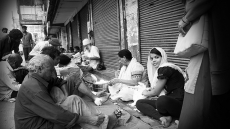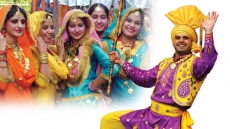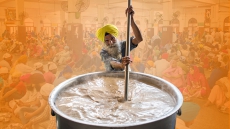The Influence of Music on Behaviour
Music breathes life into our existence through festivals, celebrations and expressions. Undoubtedly, music holds the power to affect human emotion. The debate on whether this influence translates to behaviour or action is an ongoing one in the public arena. Music, lyrics and videos showcasing violence arguably may influence people in a negative way. While one end of the spectrum suggests that people, especially youth, behave as per what they see, the other end proposes that environmental factors such as peer pressure play a role in how they react; numerous studies showcase both premises.

Akshay Jain, an engineering student at the University of British Columbia, explains that music does impact one’s body language and way of talking. “Consider a video showing people getting killed. If you are not mature enough to process that this is fake, it will influence you.” It is evident that many music videos nowadays have direct portrayals of violent behaviour. However, DJ EMENES of MiB Roadshow brings forth an interesting point, “There are cartoons and movies, such as G.I. Joe and Transfers, where people get hurt, but we don’t think it is negative. Kids are even handed toy guns to play with.” When looking at such mainstream consumption of ‘violent’ media, there does seem to be a double standard when it comes to music.

That said, the video is just a single element. There are many moving parts to music these days; the video, lyrics and musical elements work in tandem to result in the final product. High School teacher, Parabjot Kaur, believes that music choice often has to do with identity and fitting in. Young listeners do not deeply analyze components such as lyrics and solely focus on the beat, which draws them. Having been in the music industry for 12 years, Jograj Randhawa aka DJ High Voltage, says the artist cannot be blamed for making what sells, “Music cannot be blamed. It is about upbringing and mental state from both parents and friends – monkey see, monkey do.”

Moreover, since the medium of music is usually dispersed from one to many, the singer is often left with little control on interpretation. Regardless, the artist is many times at the center of the controversy. Gagan Sharma, local musician, believes that music is not a source of corruption, but entertainment, “Music and lyrics don’t influence violence. Music is a form of art. Gang violence has been in the Lower Mainland since the 90s. There has been gangster music throughout history. I don’t think pointing the finger at artists is the answer.”

In similar light, recently, Sidhu Moose Wala was said to perform as part of the 5X Fest; the City of Surrey and the RCMP raised several concerns about public safety and his performance was cancelled. RCMP media relations officer, Sgt. Chad Greig, elaborates, “The Surrey RCMP noted some violent activities that surrounded Mr. Sidhu Moose Wala’s past performances. As a result of this assessment, the Surrey RCMP advised the City of Surrey that we do not believe performances of Mr. Sidhu Moose Wala are in the best interest of public safety for the city.”

Executive director of 5X Fest, Tarun Nayar, presents his side of the coin, “Security concerns are valid; they can and should be addressed. Criminalizing music, however, effectively criminalizes the youth who listen, drives a wedge into the community, and sets a very uncomfortable precedent.” Eventually, though, we must question the extent to which an artist can truly influence the actions of the general public. In DJ EMENES’ experience, he simply plays songs because they are popular and creates a distinction between (a) what the artist is singing about and (b) what happens at an event. As Sharma puts it, “Security needs to be better. The artist carries a mic on stage, not a gun.”

Mita Naidu, being a parent of two and a community member deeply involved in the arts, claims to be against all kinds of censorship and in full support of the independent voice of artists. In her opinion, censorship is a way to shape children into making decisions that reflect our belief systems by removing other options. She clarifies, “This may ensure that those children conform with our beliefs in the short run, but the risk is that they will react with hostility to those same ideas years later when they are exposed to other opinions. This is hugely significant in light of an ever-changing social climate.”

Stepping away from the realm of the performers, the ultimate question that falls into the court of parents is how they can have conversations at home about music and the influence it has. Randhawa finds that youth who are less sheltered at home tend to be more open-minded and balanced, “Limitations are important, but so is freedom and open conversation. It is important that families do not shy away from talking about topics such as drugs and violence.”
Given the ease of accessibility and the increasing prominence of music, there is no escape to its impact. The key lies in realizing that production and consumption go hand in hand. If a certain type of music is deemed a societal vice, then consumers of music – the public – should protest by refusing to consume such content. At the same time, producers of music also uphold the responsibility of controlling the content released into communities. As both sides strike a harmonious balance, the true potential of music can then be unlocked.




